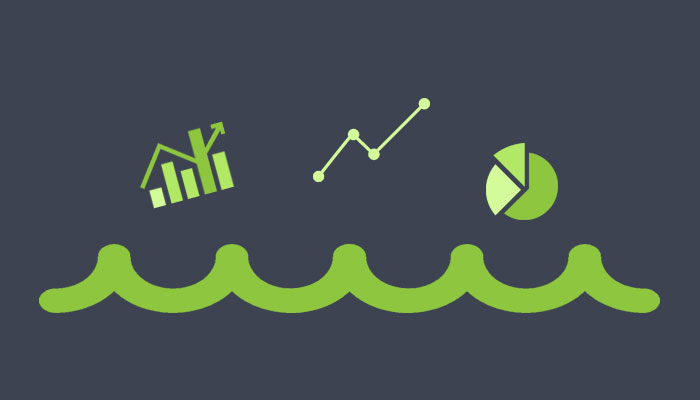
Carrie Melissa Jones is the editorial director of CMX Media. This post originally appeared on the CMX Hub.
When you’re building a community from scratch, it may seem like you have far more questions than you do answers. Where do you begin? Who do you connect with first? How come this is taking so long?
For Sandi MacPherson, founder of Quibb, these questions were really the tip of the iceberg. When she first started the site, a professional network based on sharing industry news, she described herself as a “tech newb,” looking for ways to help colleagues and professional peers communicate better. She was not only starting a new community, but was new to the community she wanted to serve as well.
How did she go from newbie to the leader of a global community and San Francisco startup? Today, she shares all the unscalable ways that she grew Quibb from an idea to a growing community of high-caliber professionals.
We’ll learn what worked – and what didn’t – while building a community from zero to hundreds to thousands.
Let’s start at the beginning…
1. Identifying key behaviors for your users
Quibb, like many startups before, actually evolved from a previous idea that Sandi was attempting to validate. “I was working on a different product previous to Quibb. It was more of a bookmarking tool for teams.
“The idea was ‘If you’re on a team, there are links that your whole team uses and needs access to. There’s no great way to share online content with teammates in a private way.’ Let’s fix that.”
But she quickly learned that she had to identify the right behaviors to build her product around. It wasn’t the bookmarking that was bringing people together. It was something else entirely.
“That product didn’t work. The lesson was that bookmarking is two distinct things to teams. One is for when you say, ‘I’m going to need this at some point so I’ll put it away for later’ and the other is when you say, ‘This is important now. Everyone look at it immediately.’”
That second use case was far more compelling and is far closer to what Sandi ended up building into Quibb.
2. Get your first 40 members
We’ve heard it before, but it always bears reminding when you’re struggling with traction: do things that don’t scale. Sandi took this to the extreme and made a huge effort to spend quality time with people she knew she wanted to be active in her community.
“When I first started, I was working in Palo Alto, and I would drive all the way up to the city to have coffee in San Francisco with potential users for an hour each. They were founders or other tech people I met who would be able to give good feedback. This is how I got my first 40 users on Quibb.”
Given the approximate amount of time it takes to drive from Palo Alto to San Francisco that means Sandi spent 100 to 133 total hours acquiring these 40 initial members during a three to four week period in which she sat down for meetings with each one of them individually.
“Of course, this was not at all scalable. At that point, things don’t need to be scaled. Going from one user to ten to 100, it’s okay to do full-on manual work. Only when you get much further on in your process should you be seeking to productize scalable growth.”
3. Deliver value through content
After Sandi had worked with her first 40 Quibb members, gotten their feedback, and invited them to join, she continued to hit the ground and go meet people in person.
“Next, I started to go to events that I knew would be popular. I found that people would search for events afterward and would want to read a wrap-up on the events, so I’d go and then write a summation really quickly to get what happened in those events.”
This showed Quibb members that she was interested in delivering value to them. They might not be able to make it out to every conference or networking event, but they could get all of what they missed in one place.
4. Ask for help
“A lot of things in the beginning require you to ask people for things, favors, check-ins, and so on. It was really hard to ask for help, but it was also really important.”
“Maybe because I’m Canadian, I wasn’t good at it at first,” she laughs.
So what advice does she have for asking for favors even when you’re uncomfortable?
- Give before you get. “You have to be sharing other people’s work without being asked. Then when you’re asking them for a favor, it’s not a big ask. Everyone in the Valley who has worked at or built a startup knows that this is hard and they’re more willing to help people through that stage.”
- Keep it simple. “Make it really easy. If you’re asking for an intro, write the email and then send it so that they can copy-paste it. If you ask someone to tweet a link, write the tweet for them. Whatever you’re looking for and whatever you need, just make it easy.”
- Be comfortable with failing small. “There’s an ever-present idea of failure in startups. A lot of times people think of failure as the whole company failing. But there’s actually failure that happens every single day when you’re building. We face this all day. You not only have to accept that your company might fail, but you have to be okay with failing five times in the next hour. When asking for favors, you have to be okay with emailing 50 people and only three responding to you.”
5. Reach out personally to new members
“Early on, I couldn’t believe that people were even signing up to use Quibb. So I felt like I should really be extra helpful. I would email everyone who signed up from my personal Gmail account to welcome them to the site.”
“For me, it was really important to make it feel like more than a drip campaign. Typically, when you sign up for a new service or product, you don’t think ‘Who did this? Who made this for me?’”
It’s key to make everyone to feel personally welcomed and that they knew who was behind the product. Her response rate to these emails was unbelievable, she says. A typical drip campaign for a business product gets an open rate of only 20 percent and a much lower response rate. Sandi’s response rate alone was well beyond 20 percent.
The best part about the personal emails? “They would open the door for a discussion and then that was someone I really knew. This was a really big deal.”
6. Learn from missteps
Of course, simply connecting with people for the sake of connection does not always work.
“Once there were a couple hundred people using Quibb, I started doing interviews. I would interview a Quibb member, send out an email to them with questions, get everything back, copy-edit, include photos, and then post the interview on Quibb as a “Spotlight.”
“People signing up had a well of knowledge and it made a lot of sense to expose and share that with other members.” So the spotlights were meant to not only celebrate her members but also tap them as a resource for others.
However, the spotlight posts didn’t get the kind of engagement she was hoping for. She chalks this up to timing and a need to change the approach. “Just because it didn’t work at that point, that doesn’t mean it won’t work in the future.”
7. Starting to think bigger
Sandi credits a lot of the success of Quibb to the outreach she was able to do with key business and tech bloggers.
“I would ask also members to write blog posts called ‘Read What I’m Reading.’, and offer to write the post for them”
It was a value-add for them, as it “was like a newsletter service where the bloggers’ readers could see what they read every day. This allowed them to engage more deeply with their readers and gain new ones as well.”
“Whenever someone would sign up, I would check if they had their own blog. If someone did have a blog that seemed related to news, media, or content, I would email to ask them to write about a high-level related topic, such as ‘The Future of News.’”
“One writer, Casey Winters, responded within two hours and posted a really long piece on the future of news and wrote really nice things about Quibb. We shared this on Hacker News and Twitter.”
8. Sharpen your language and outreach
“In terms of growing the member base, I realized early on that I needed to be really specific about my outreach. Quibb is professional and industry content. It is not focused on mainstream content. Your friends at a BBQ on the weekend aren’t going to care, but people in your professional network will care. That’s who I want to reach.”
When she would ask people to talk about Quibb, she would say “share with your colleagues,” never “share with your friends.”
“I also created a personalized landing page for all of the members. It basically said, ‘Hey, I’m Sandi, I want to share what I’m reading for work with you. Check it out.’ This had another big impact.”
“I’d ask members to share this landing page with their existing listservs or in LinkedIn Groups. For instance, one club at Stanford had a LinkedIn group of professionals that would really enjoy Quibb, so I would ask people in that group to share there.”
“LinkedIn group admins would get angry sometimes in the more strict groups. I felt bad about it when that happened. But it worked, and the people who signed up really did like Quibb and want to use it”
9. Start to think about automation: Collect the right data during user onboarding
None of this outreach would be possible if it weren’t for the amount of information that Sandi collects about her members when they sign up. For instance, they must share their real name, job title, and company. There is no room for anonymity here.
“People always say, ‘Make the onboarding process as lightweight as possible.’ But in my case I know that will lead to a broken product. I’ll have a slightly lower conversion rate, but because the industry content you’re reading is inherently tied to specific information about your professional identity, the product and connections between members it creates couldn’t exist otherwise.”
Finding out where people work has allowed her to target key people, find out if they have LinkedIn groups or other ways of connecting, and know where to find people both online and off. These are the first initial steps in automating user outreach.
10. Getting past 1,000 members and thinking about scale
Today, Sandi is focused more on scale and spending her time thoughtfully connecting with her most engaged members. She hosts events and is deeply involved in the conversations that happen on the site daily. As the site has grown, it’s become impossible to personally email everyone these days.
The algorithm Quibb uses to ensure that the best content floats to the top also helps the most engaged members discover others’ expertise.
“It’s not just about influencers sharing content. I often meet with people with ‘normal’ job titles who know way more about their own niche than anyone else. Everyone has insights even if they don’t have a fancy job title. So I want the site to reinforce the idea that there are professionals out there who are experts in something that their professional peers are very interested in, and that people have unique insight that they sometimes don’t even realize they have.”
Bonus: Accepting community funding for a community product
In perhaps the coolest turn of events that a community builder can imagine, Sandi turned to her community when she began looking for funding. She announced that she’d be raising a seed round of $800,000 in February 2014, with$100,000 reserved for smaller cheques via the Alphaworks platform. The round closed, fully funded by people and venture capital firms that use Quibb.
She was very deliberate in choosing this route.
“This really goes back to Quibb’s beginnings. I had been meeting with those first 40 people, and was open with them even when I didn’t know what I was doing,” she says. “So all these experienced people were using Quibb and helping me make it better. As the membership grew I kept going to them when I thought of rolling out new features because they were the real experts.”
When it came time to fundraise, it was again the idea that these people had helped build our company.
“It was more difficult and time-consuming and I could have easily done a typical fundraising process, but again it was the idea that this goes against the norms and really defined what Quibb is and how it functions and self-regulates.”
This was basically me saying: “You helped build features, you put the content on Quibb everyday, now you can help build the company.”
Read next: The 7 (mostly free) tools Product Hunt used to build its early-stage community
Get the TNW newsletter
Get the most important tech news in your inbox each week.







